This article is will help you learn more about butter in baking. You will learn tips and tricks on why butter is the so integral to baking success. Continue reading to understand all you need to know about the importance of butter in baking!
Explore the pivotal role of butter in baking, with these insights, tips, and techniques. Enhance your baking prowess with this comprehensive guide.
Butter in Baking: Essential Tips for Perfect Baked Goods
If you are a baking beginner, you can benefit tremendously from learning about butter, its importance while baking, and how to use it properly. So, what makes butter so important while baking? I would like to answer some of your butter in baling questions. This article will talk about butter and understanding the role butter plays in baking and how you can master using butter to improve your baked goods!
Making butter – what is it, and how does it work?
Before understanding butter’s role in baking, we must learn how to make it. The process of making butter is quite simple, and anyone can make it at home. You make butter by churning cream, which allows the fat (butter) to separate from the buttermilk. I churned butter as part of a grammar school project, and I bet you did, too. Here are easy instructions on how to make butter at home. And yes, you can use homemade butter in baking.
The buttermilk is sold after packaging and is used in baking, too.
Generally speaking, butter is made from cow’s milk. But, in recent years, dairy owners also use milk from other animals like goats to make butter. Which butter brand or type you choose depends on your preference and the recipe you follow. So check the package ingredients or the manufacturer’s website before you purchase butter the next time you are in the aisle!
Strategies for Softening Butter
Most baking recipes demand softened butter, which is different from the original state in which butter is sold in the market. Here are some quick and simple ways to soften butter before your next baking session:-
1. Leave it on the counter
The easiest ways to soften butter is to remove it from the refrigerator and keep it on the counter under indirect sunlight. You can do this for 30-40 minutes before using it in any recipe.
2. Microwave to the rescue
If you have a microwave, that will make softening butter an easy task. Place the amount of butter you need in a microwave-safe bowl. Place the bowl inside the microwave for about 10 seconds. Rotating the bowl, and microwave for another 10 seconds. You want to do this until soft, but not liquid.
3. Cheese Grater
Most of us have a cheese grater at home, which you can also use for softening the butter. Run the butter down the larger holes of the grater will break the butter down into smaller pieces easier. It will soften faster.
Distinct Types of Butter
Walking through the grocery store, you might have seen the endless types of butter in the refridgerator case. Factors like taste, smell, color, etc., distinguish between these types.
To use butter correctly while baking, you need to know the difference between different types of butter. So before anything else, let’s discuss some of the most popular types of butter used in baking:-
1. Unsalted Butter
Baking often depends heavily on sweetness as the prominent flavor, making unsalted butter a great baking choice. It mixes easily with the rest of the ingredients, elevating the taste of your baked goods. Unsalted butter is wise if you are unsure which type to choose to bake with. There is no industry standard for how much salt is in salted butter, so that varies from brand to brand which can impact your baking results. Adding salt + unsalted butter gives you more control over the recipe.
2. Salted Butter
You will see recipes that call for salted butter. Sometimes a recipe even calls for additional salt plus salted butter. These might be tested recipes that assume most people have salted butter in the house.
3. Sweet Cream Butter
As the name suggests, this butter is made from pasteurized fresh or sweet cream. It comes in two kinds, unsalted and salted; the unsalted kind is better suited for preparing baked goods. Unsalted sweet cream butter is mildly sweet and perfect for making muffins, frostings, and much more.
4. Organic butter
Organic butter is made from milk produced by cows raised certified organic. These cows are only given food free from pesticides or any other chemicals. Organic butter is ideal for those who follow a strictly organic diet and still want to use butter in their recipes. It has a tangy flavor with a slight hint of sweetness to it.
5. Cultured Butter
Also known as Artisan butter, cultured butter is famous because of its preparation process. It is handcrafted by adding bacterial cultures to the cream after pasteurization. It has a subtle tangy flavor because of its high butterfat content, making it ideal as a toast spread or for making butter-based baked dishes. You can also use cultured butter to make soups, coffee cakes, and other dishes that demand a tangy or acidic flavor.
6. European-style butter
European-style butter is great for recipes like croissants, eclairs, biscuits, puff pastries, etc., European style is a great butter type to use. Prepared with a high percentage of butterfat, its lower moisture content makes it perfect for pastries. Many European butters are rich in flavor and is specifically known for its creamy texture and taste. (I personally use Irish butter!)
7. Brown Butter
Brown butter furthers regular butter, making it perfect for cooking and baking several drool-worthy dishes. You essentially toast regular butter’s milk solids to turn it into an amber-colored liquid known as brown butter. It adds a nutty yet caramelly flavor to your baked goods, instantly elevating their flavor profile. You can use brown butter for making pancakes, waffles, cookies, and other dishes where you wish to add a nutty taste to the final product.
The Purpose of Butter in Baking
Now that you know how to make homemade butter and the different kinds of butter available, get back to the main topic. It is necessary to learn why experts consider butter so crucial in baking so that you can use it wisely in your recipes. Let’s discuss some of how butter can improve your baked goods:
1. Flavor
Most people will argue that butter, like most fats, has no flavor and cannot improve the taste of any dish. But butter has a mild creamy flavor, along with a hint of milkiness to it.
Fat also allows other ingredients to blend well, enhancing the dish’s overall flavor. The high fat in butter is the main reason for this. Butter-flavored goods are a trend in the market, and people have been experimenting more and more with creating new recipes to mimic the butter flavor.
2. Improve the softness of the recipe
Texture is very important in baked goods. You want your pastries and cakes to be delicate, fluffy, and light. Mixing the butter with sugar makes the mixture smoother, allowing air to be introduced to the batter. Adding butter to bread dough also makes it softer, as, without fat, bread may become more crusty and dry.
3. Add Moisture
Butter is a commonly used ingredients in baking because it adds moisture. When you blend flour and butter, the higher fat content of butter makes the dough tender. The mixture contains more moisture, allowing your baked goods to have a softer texture. If you consistently fail to bake perfectly fluffy baked goods, it may be time to look at how much butter you use while making the dough.
4. Increase Shelf Life
Wouldn’t we all love it if our homemade baked goods had a long shelf life so we could enjoy them for a long time?
As discussed before, butter allows your recipe to retain moisture, which makes it easier to make them last longer. Baked goods shouldn’t get rigid or stale early because of the moisture. You might find this fact interesting if you constantly struggle to keep your baked treat fresh for a long time.
5. Leavening
Leavening baked goods is an essential baking task that doesn’t often make you think about butter. But butter can make it easier for your dough to rise more. As we discussed earlier, butter has about 15% water and fat, which evaporates into steam when you bake, allowing the dough to rise more.
If you love making puff pastries at home, you would be surprised to know that layering butter between the dough is the main reason they grow well. Butter is the secret catalyst for those struggling to make your dough rise while baking.
Make sure the butter temperature is right!
Another thing that matters when using butter in baking is getting the temperature right. Whether the butter should be soft, cold, or wholly melted depends on the recipe you want to use. Let’s talk a bit more in detail about what temperature butter should be at for which sort of baked goods recipes:-
1. Cold Butter
Recipes where you need to create distinct layers, for example, puff pastries, biscuits, scones, etc., are ideal for using cold butter. Cold butter is at about 35°F, allowing it to help the pastry to become flaky and rise properly. Make sure to use cold butter for these types of recipe for better final results.
2. Softened Butter
Making cakes and cookies at home are traditional favorites. Sifting, which enables air to be introduced into the mixture, cannot be performed correctly with cold or extra-warm butter. Instead, butter that has to undergo the creaming process with sugar should be softened.
Softened butter is 65-67°F. Using butter that is colder than that in baked goods might some goods too dense as it would be hard to introduce air to the mixture. Blending butter, fat, and sugar can ensure your baked goods are fluffy and delicious!
3. Melted Butter
Melted butter is mainly used for making quick pancakes or some cake batters. Butter with higher fat content has a higher melting point, so keep that in mind when choosing which butter to use for your recipe.
Melted butter is ideal for quick bread recipes, but it also makes them denser than when using soften butter. It is an excellent substitute for liquid fat to add a buttery taste. The exact melting point of butter depends on which type you purchase, so make sure to do some research beforehand.
The Most Effective Tips for Baking With Butter!
Now that you know more about the role of butter in baking before we wrap up, there are specific tips to remember when you use butter. These tips should save you time and improve your chances of baking success.
1. Be smart when storing the butter
Butter can quickly melt or become unusable if you don’t store it correctly. Keeping it in the original packaging might be the smartest choice; otherwise, placing it in a sealed container before putting it in the fridge will also work.
Please keep it away from strongly scented ingredients to preserve its original taste. The butter must be stored well, especially if you want to use it at a particular temperature and maintain its authentic flavors.
2. Creaming ingredients
Creaming butter, sugar, and sometimes eggs are typical while baking most dishes. As with everything else in cooking, you might worry about creaming these ingredients too much. But don’t worry; overmixing them together won’t cause any damage!
The more you mix butter and sugar, the more air passes through the mixture, resulting in soft and lighter baked goods. But once you add flour to the mix, keep an eye on how much you mix so you don’t end up with chewy treats. Otherwise, feel free to cream your butter well before proceeding with the recipe.
3. Frozen grated butter for biscuits
For baking biscuits or scones, experts usually suggest using frozen and finely grated butter in the recipe. Pull butter out from the fridge and grind it into the larger holes of the grater directly in the flour mixture.
Grated butter mixes easily with other ingredients, making the scones or biscuits more flaky and delicious. If you have a grater at home, quickly grating the butter before mixing it with other elements in the recipe will be a wise choice.
4. Be sure to research the butter you buy
Butter comes in wide varieties and with different characteristics. Most recipes mention which type of butter you should use, so pay attention to those tiny details.
We discussed different types of butter before, so come back to this post every time you visit the market to purchase butter for any baking recipe. Picking the right kind of butter is the first important step in the process, so ensure you spend enough time researching the butter you want to buy.
5. Do not substitute butter with anything else
The current health-loving world would argue that butter is not suitable for you, but that doesn’t mean you should altogether remove it from your baking session. In this post, we explained the importance of butter in baking and why you should use it wisely. Though there are alternatives to butter available, not all seem to do the trick as a replacement. If you must use a butter replacement, you will need to test the recipe to see if you can achieve the results you would like.
Unsalted vs. Salted Butter – Which to choose for baking?
If you look at baking recipes often, you might have noticed that most such recipes ask to use unsalted butter. They suggest adding salt later instead of using salted butter to make baked goods. The reason for this is that each brand may have a different salt content. Adding salted butter to your recipe makes predicting the final taste harder. You have better control over the recipe when you use unsalted butter and add salt.
Butter can be found in every household worldwide and has been used for years for baking. Bakers have depended on butter for a long time and it is considered an essential ingredient in baked goods recipes. Hopefully this article and the answers to some common questions about butter will help you produce moist, delicious, fluffy baked goods.
● For more recipes on Ann’s Entitled Life, click here.
● If you enjoyed this post, be sure to sign up for the Ann’s Entitled Life weekly newsletter, and never miss another article!
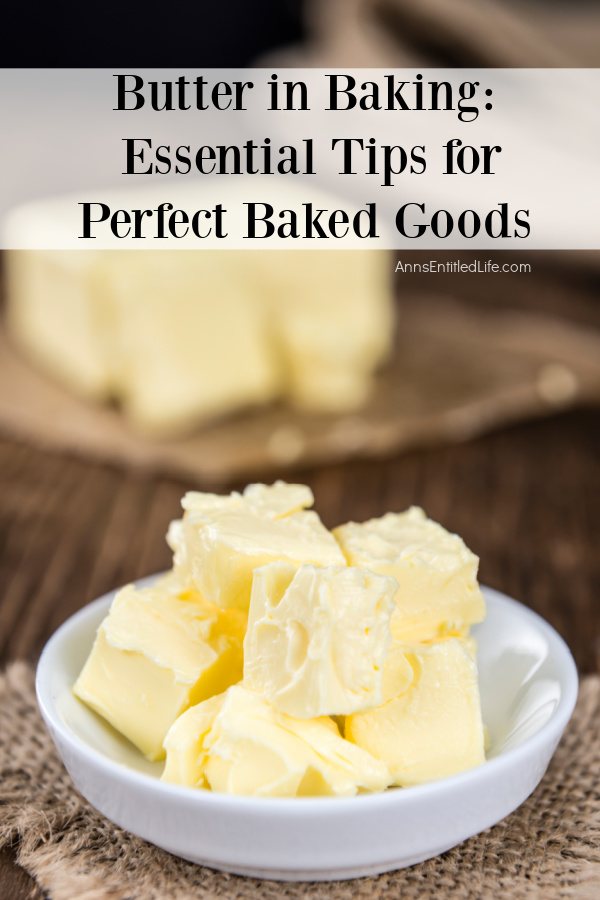
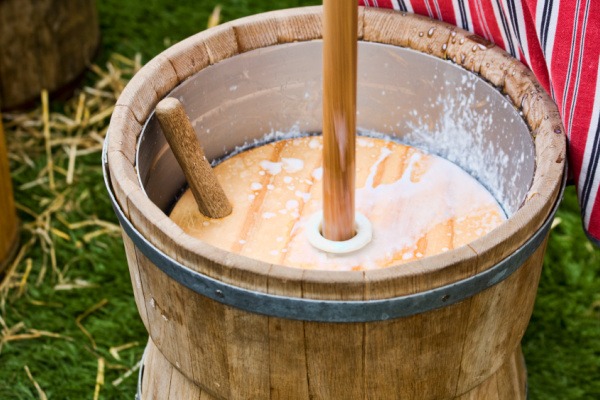
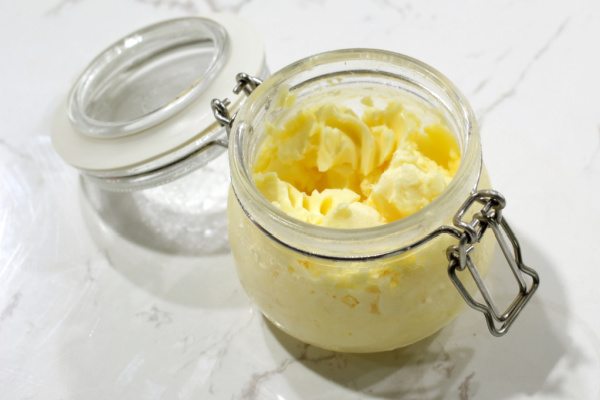
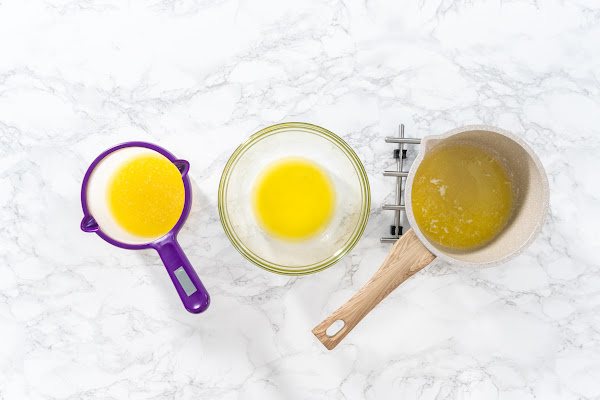
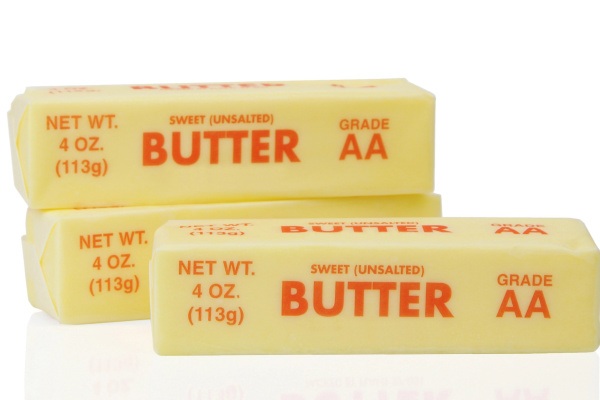
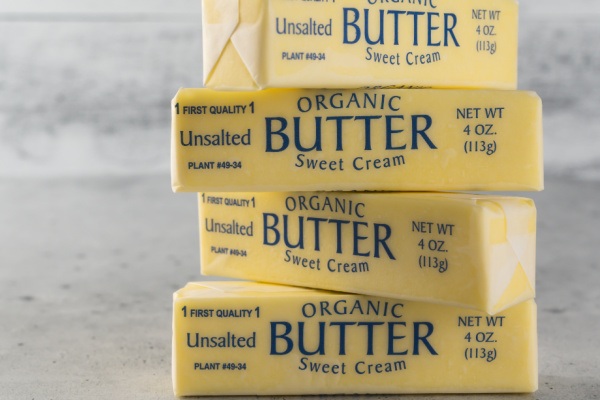
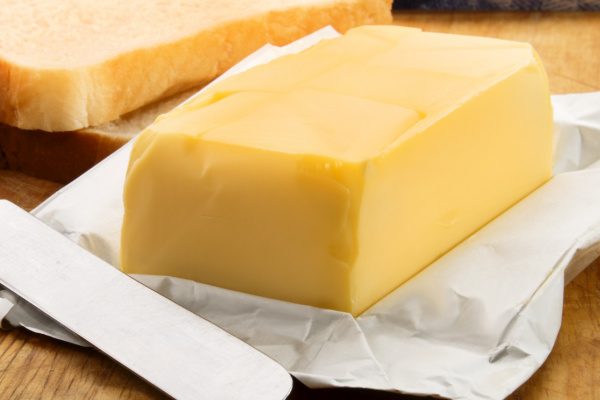
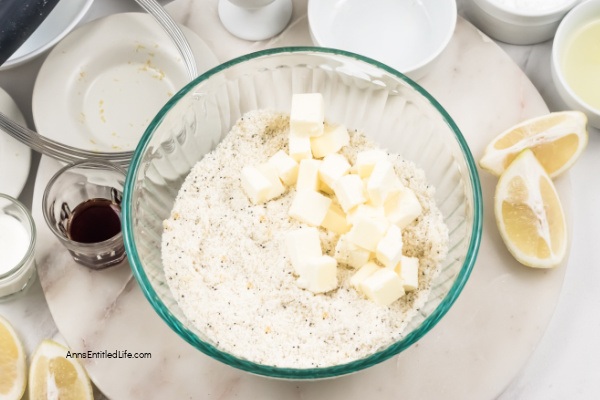
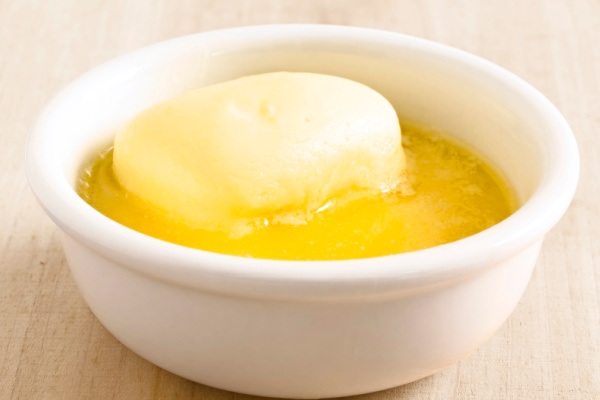
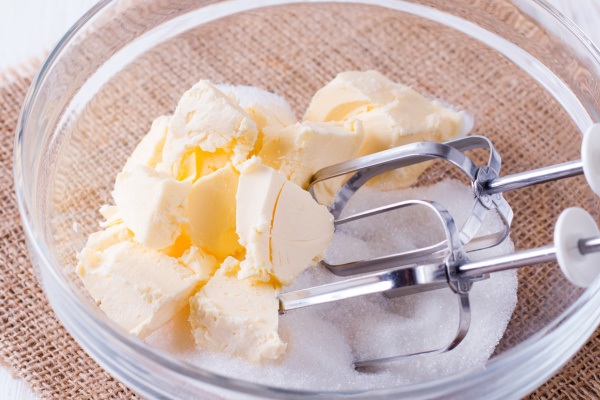
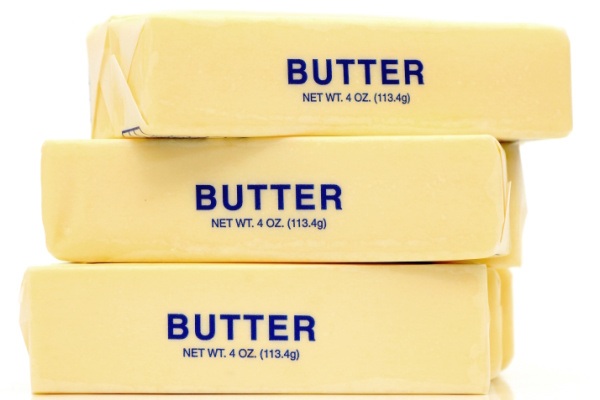
Leave a Reply